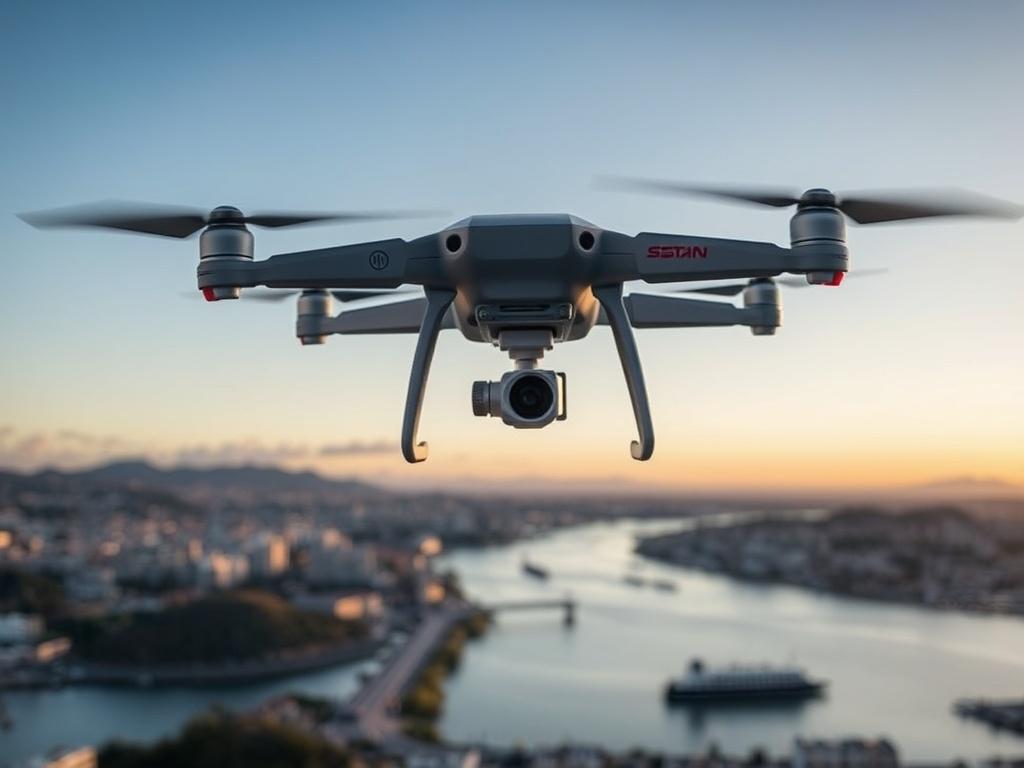
How to Travel with a Drone Legally: A Complete Guide for Adventurous Flyers
Traveling with a drone can open up incredible opportunities to capture stunning aerial footage and photos, but navigating the laws and regulations can be tricky. If you’re an adventurous drone enthusiast planning your next trip, understanding how to travel with a drone legally is essential. This comprehensive guide will walk you through everything you need to know, from packing your drone safely to complying with international laws, so you can enjoy your travels without any legal hiccups.
Understanding Drone Travel Laws: Why It Matters
Flying a drone is exciting, but the rules surrounding drone travel vary widely by country and even by region within countries. These regulations are put in place for safety, security, and privacy reasons, and ignoring them can lead to hefty fines, confiscation of your drone, or even criminal charges. Before you pack your drone for your journey, it’s crucial to research the restrictions and requirements of the place you’re visiting.
When we talk about how to travel with a drone legally, it’s not just about flying your drone. It begins with how you prepare for takeoff—actually packing and carrying your drone during your travels. For example, airlines have specific guidelines regarding drone batteries, and customs officials may ask questions about your drone’s purpose.
Understanding these nuances ensures you avoid surprises and keep your drone safe during your adventure.
Packing Your Drone for Travel: What You Need to Know
Traveling with a drone means more than just slipping it into your backpack. Thoughtful packing is a key step in ensuring your drone arrives safely and meets airline requirements. Here are some important points to keep in mind:
- Use a sturdy drone case: A hard-shell carrying case specifically designed for drones protects your equipment from damage during transit.
- Manage your batteries carefully: Most airlines classify lithium-polymer batteries as dangerous goods, so you’ll need to pack them in your carry-on luggage, ensuring each battery is individually protected against short circuits.
- Remove propellers if possible: Detaching propellers reduces the risk of damage and makes packing easier.
- Carry essential accessories: Spare batteries, chargers, memory cards, propellers, and remote controllers should be neatly organized.
Using a packing checklist can be a helpful strategy to ensure you don’t forget vital components before your flight. Here’s an example of what your drone travel checklist might look like:
| Item | Purpose | Notes |
|---|---|---|
| Drone | Main device | Pack in protective case |
| Batteries | Power source | Carry in hand luggage; protect each battery |
| Propellers | Flight components | Remove and pack separately to avoid damage |
| Remote controller | Flight control | Keep accessible for security checks |
| Chargers and cables | Charging equipment | Pack neatly to avoid tangles |
| Memory cards | Storage for footage | Pack spare cards securely |
Airline Regulations for Traveling with a Drone
Airlines have their own policies regarding drones, especially concerning lithium batteries. Familiarize yourself with these rules to avoid last-minute airport headaches.
Lithium Battery Restrictions
Lithium batteries are considered hazardous materials, so most airlines limit how many you can bring and how they must be carried. Generally, drone batteries must be in carry-on luggage, not checked bags. Here are some typical rules to keep in mind:
- Batteries under 100Wh are usually allowed in carry-on luggage without approval.
- For batteries between 100Wh and 160Wh, airline approval is often required, and there may be limits on the number of batteries allowed.
- Spare batteries must be individually protected to prevent short circuits with tape over terminals or by placing each battery in its own plastic bag.
Because rules vary by airline and destination, always check your specific airline’s policy before traveling.
Declare Your Drone at Security
When passing through airport security, it’s a good idea to declare your drone equipment. Remove the drone and batteries from your bag for separate screening. Some security officers might ask questions about your drone, so be prepared to explain that you use it for photography, filmmaking, or personal enjoyment.
Customs and Import Regulations for Drones
When traveling internationally, customs regulations can add another layer of complexity to how to travel with a drone legally. Different countries have different rules on importing drones, and some impose strict limits or even bans.
Registration and Import Permissions
Certain countries require drones to be registered even before you arrive. In some cases, you might need to apply for import permissions or notify customs in advance, especially if your drone equipment is professional-grade or exceeds certain value limits.
Temporary Import and Carnet System
For tourists, a temporary import system often applies. This means you bring your drone into the country without paying duties, with the understanding you will take it back when you leave. Sometimes this is formalized through a document called a “carnet,” which acts like a passport for your equipment.
Be Aware of Drones Banned or Restricted
Some countries outright ban drones or have extremely strict rules about where you can fly, such as near airports, military installations, or government buildings. Traveling with a drone to these locations can result in confiscation or legal trouble, even if you don’t plan to fly.
Rules for Flying Your Drone in Different Countries
Even if you’ve traveled legally with your drone, flying it may require adhering to local drone laws. Here’s how to prepare:
- Register your drone: In many countries, drones over a certain weight must be registered with the aviation authority before flying.
- Check flight zones: Use drone apps or official maps to identify no-fly zones, restricted areas, and approved flying locations.
- Follow altitude and distance limits: Most places limit drone flight heights (usually 400 feet or 120 meters) and require you to maintain visual line of sight.
- Respect privacy laws: Avoid flying over private properties or capturing images where privacy is expected.
- Obtain permits: For commercial purposes, permits or special approvals might be mandatory.
Example Drone Laws in Popular Travel Destinations
| Country | Drone Registration | Maximum Altitude | Other Key Rules |
|---|---|---|---|
| United States | Yes, via FAA for drones over 0.55 lbs (250g) | 400 ft | No flying near airports, crowds; keep within line of sight |
| United Kingdom | Yes, for drones over 250g | 400 ft (120 m) | Cannot fly within 50 meters of people or buildings |
| Australia | Yes, drones over 250g must be registered | 120 m | No flying near emergency sites, populated areas without permission |
| Japan | Yes, for drones over 100g | 150 m | Must get permission for flights over urban areas |
| France | Yes, for all drones over 800g | 150 m | Restrictions near airports, must respect privacy laws |
Tips for Smooth Security and Customs Checks
Navigating airport security and customs can be stressful, but following these tips will help you travel with a drone legally and hassle-free:
- Carry documentation: Keep registration certificates, permits, and receipts handy to show if asked.
- Use carry-on luggage: Store your drone and batteries in your carry-on to avoid damage and meet airline requirements.
- Arrive early: Allow extra time for security procedures when traveling with drone gear.
- Be honest and clear: Explain you are traveling with a drone and answer all officer questions politely.
- Know the regulations: Having a good understanding of drone laws at your destination reinforces your credibility.
Insurance and Liability Considerations When Traveling with a Drone
Another important aspect of how to travel with a drone legally is ensuring you have adequate insurance coverage. Some countries require drone operators to have liability insurance, especially for commercial use.
Types of Drone Insurance to Consider
- Liability insurance: Covers damage or injury you might cause to others while flying your drone.
- Hull insurance: Protects your drone against damage or loss.
- Third-party insurance: Required in some countries by law to cover any incidental damage.
Before you travel, check if your existing drone insurance applies internationally. You might need to purchase temporary coverage for your destination or additional rider policies.
Practical Advice for Responsible Drone Use Abroad
Respectful, responsible drone piloting not only keeps you within the law but helps maintain the reputation of drone users globally. Here are some handy pointers:
- Fly during daylight hours: Night flights are often restricted unless specifically authorized.
- Keep noise in mind: Drones can be disruptive in quiet, natural settings; fly considerately.
- Limit flights over crowds: Avoid flying above people to reduce risks and privacy concerns.
- Follow local cultural norms: Some communities may have sensitivities about drone filming.
- Keep your drone firmware updated: This helps avoid technical issues and may improve compliance features.
Summary Table: Key Steps for Legal Drone Travel
| Step | Action | Reason |
|---|---|---|
| 1 | Research drone laws at destination | Understand registration, flying, and import rules |
| 2 | Pack drone carefully in approved case | Protect against damage and meet airline rules |
| 3 | Carry batteries in carry-on with safety measures | Comply with airline safety policies |
| 4 | Declare drone at security and customs | Avoid confusion and potential confiscation |
| 5 | Register drone and obtain permits if required | Fly legally and avoid fines or penalties |
| 6 | Follow local flying rules and respect privacy | Ensure safe and responsible drone use |
| 7 | Consider insurance coverage | Protect against damage or liability abroad |
Conclusion
Traveling with a drone legally may seem daunting at first, but with thoughtful preparation and a solid understanding of regulations, it can be a rewarding part of your journey. From packing your drone safely to navigating airline policies, customs regulations, and destination-specific drone laws, each step plays a crucial role in ensuring your aerial adventures are smooth and trouble-free. Remember that respecting privacy, safety, and local customs not only keeps you compliant but also fosters a positive image of drone pilots worldwide. Take your time researching, be organized, and stay informed—this way, you can enjoy capturing breathtaking moments from the sky legally and confidently wherever your travels take you.




